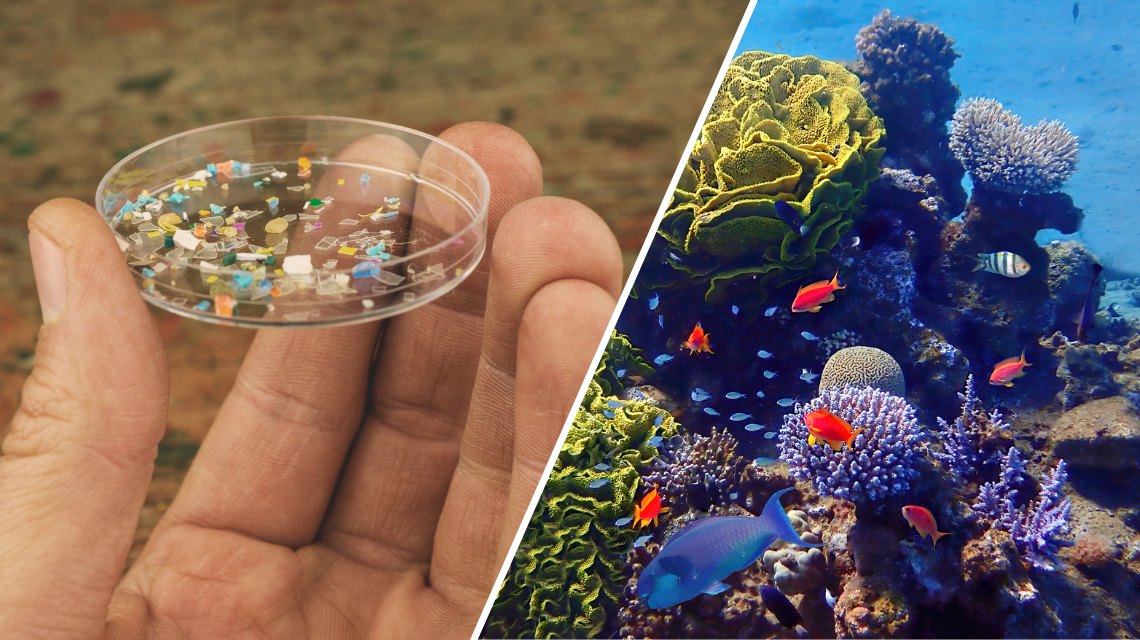Italian National Agency for New Technologies, Energy and Sustainable Economic Development

Environment: ENEA shows toxicity of nanoplastics to aquatic organisms
An ENEA study on in vitro models of sea bream[1] and rainbow trout[2], conducted in collaboration with the CNR and the University of Tuscia (Viterbo) and published in the journal “Science of the Total Environment”, showed how polystyrene nanoplastics cause cells apoptosis in marine animals.
The study found that 20-nanometer polystyrene nanoparticles -a hundred times smaller than a speck of dust- caused more cell damage than 80-nanometer nanoparticles. Plus, sea bream cells were found to be about four times more sensitive to nanoparticles than trout cells.
“The plastic particles stuck to cell membranes, altering their shape and structure, with traces already evident after 30 minutes of exposure. Only the 20-nanometer nanoplastics severely damaged the cells over time, leading them to programmed cell death (by apoptosis). And the first obvious signs of this process included the shrinkage of the cell, the formation of protuberances on the membrane, the exposure of phosphatidylserine (a molecule essential for cell function) on the outer surface of the membrane, a clear sign of 'agony' of the cell, to DNA fragmentation,” explained Paolo Roberto Saraceni, researcher at the ENEA Biotechnology RED Laboratory and co-author of the study.
“The results obtained”, Saraceni emphasizes, ”highlighted that the health of aquatic and terrestrial ecosystems and its impact on human health is closely interdipendent, and can be dramatically compromised by the spread of nanoplastic pollution if not addressed early enough. With this study researchers have identified possible mechanisms underlying the damage to biological tissues caused by nanoplastics, through the application of innovative biotechnologicalsystems[3] and the development of advanced animal-free experimental models, which have proved crucial in expanding the understanding of the impact of plastic waste on ecosystem health, allowing to obtain reproducible data and to conduct large-scale studies.
Plastic nanoparticles (visible only under a microscope and less than 1,000 nanometers in size, which is about 50 to 100 times smaller than the diameter of a hair) have attracted the attention of the scientific community because of their ability to cross biological membranes like the intestinal membrane and the blood-brain barrier, [4] increasing their potential toxicity to marine organisms. “Nanoparticles can cause effects like cellular toxicity, neurotoxicity, genotoxicity[5], oxidative stress, metabolic alterations, inflammation and developmental malformations in marine species, but the cellular and molecular mechanisms underlying these impacts are not yet fully understood”, Saraceni pointed out.
Contamination of aquatic ecosystems by nanoplastics is considered a global threat to their living organisms. Plastic production worldwide was more than 400 million tons in 2022 and the most recent estimates predict it will double in the next 20 years and triple by 2060[6]. Most plastic waste is improperly managed: only 9 percent is recycled, 19 percent incinerated, and the rest ends up in landfills or uncontrolled disposal sites. This contributes to the accumulation of plastics in the environment, which it mainly affects marine ecosystems: it is estimated that more than 171 trillion plastic particles accumulate in the marine environment, breaking down into smaller pieces: polystyrene is one of the most common non-biodegradable plastics and contributes to a significant fraction of environmental plastic pollution. Among the most frequently found in marine organisms, it has significantly higher toxicity than other polymers tested. Its potential toxicity to aquatic organisms and ecosystems remains a concern, so further research is needed to investigate its long-term effects on a larger scale”, Saraceni concluded.
Photo Gallery
Notes
[3] Innovative ‘omics’ molecular approaches to transcriptomics. The word “omics” refers to techniques that analyze everything of a certain type in an organism, not just a part. For example: genomics (studies all genes), proteomics (studies all proteins) and transcriptomics (studies all RNA molecules, ribonucleic acid, present in all cells that help “translate” the instructions contained in DNA to produce proteins, essential for the functioning of the body).
[4] The blood-brain barrier is a protective structure that separates the blood from the nervous tissue of the brain and central nervous system. Its main purpose is to control which substances can pass from the blood into the brain, protecting it from harmful substances and maintaining a stable environment for the functioning of neurons.
[5] Genotoxicity is the ability of a chemical substance or physical agent to damage the genetic material of a cell, i.e. DNA. This damage can lead to mutations, chromosomal breaks or other genetic alterations, with potential health effects, including the development of cancer or genetic diseases.
